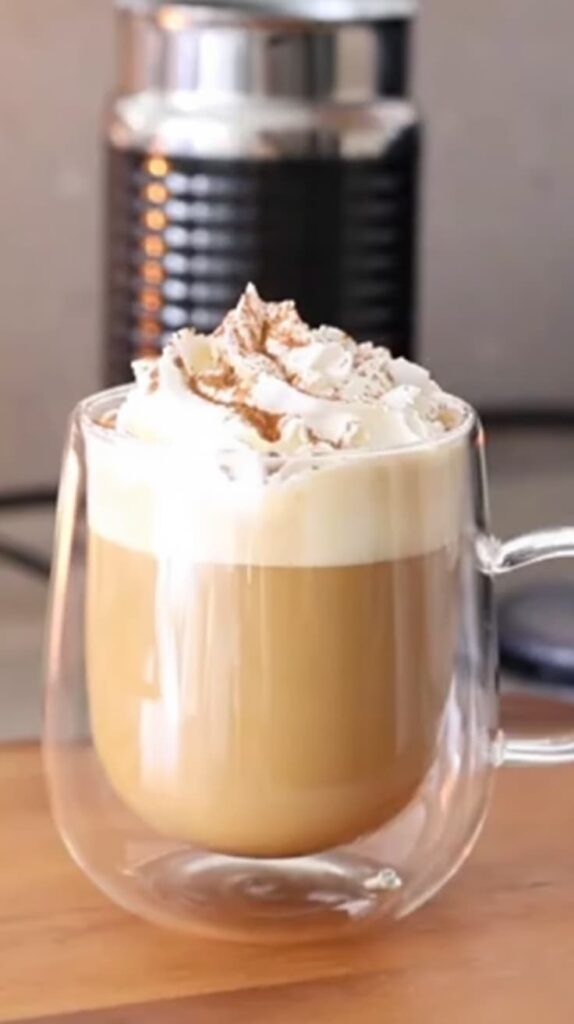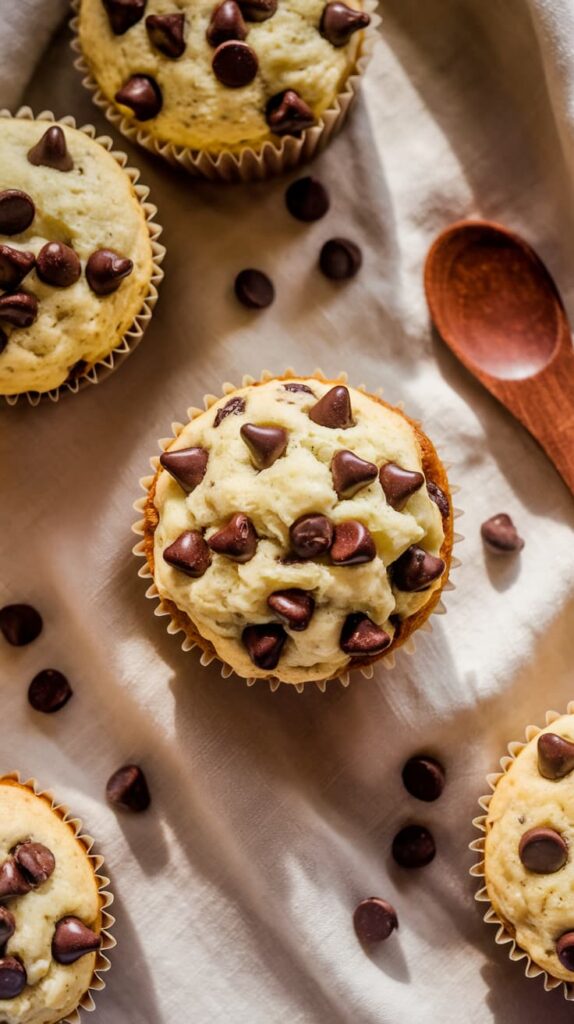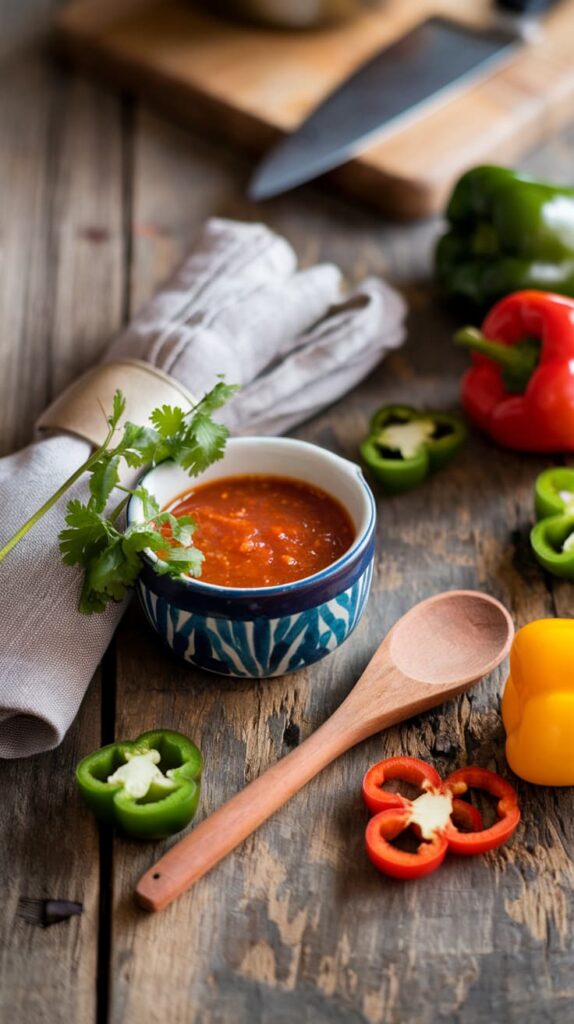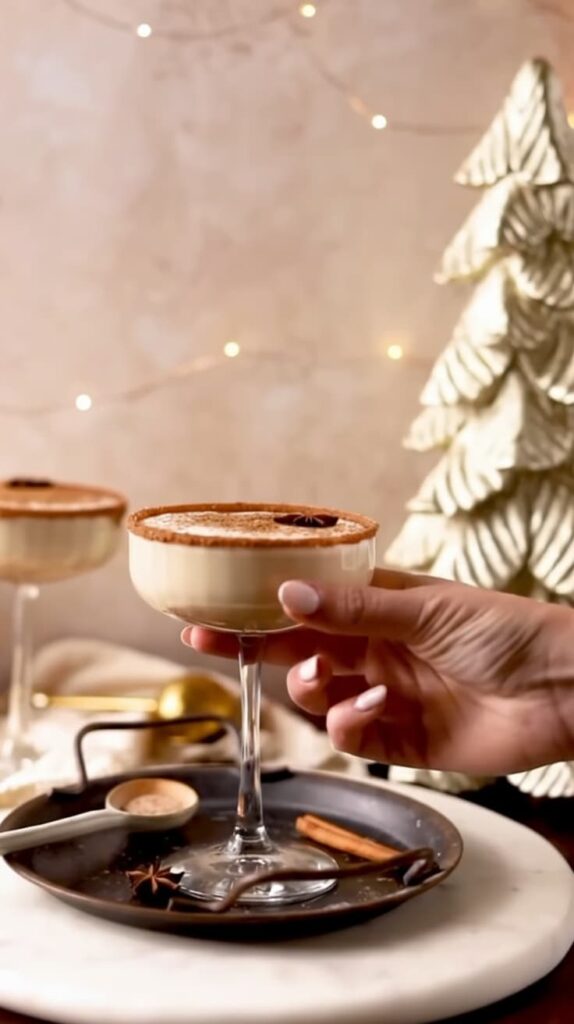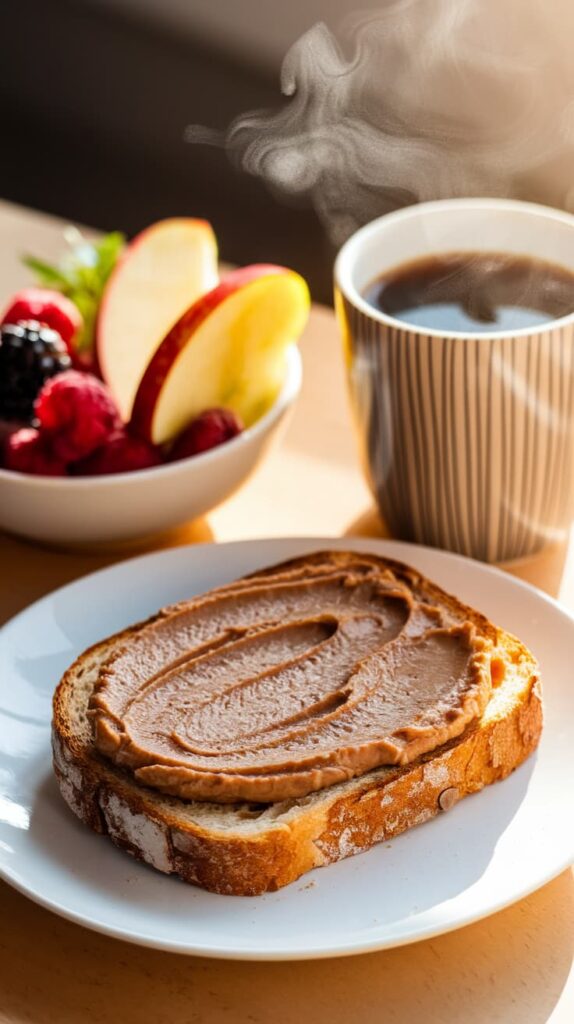Cannabis Infusion Guide
Adding weed to your food is a game-changer. It lets you customize the whole experience. You can make it chill, make it creative, whatever floats your boat.
Mixing weed into stuff like oil and butter makes it super easy to use in all sorts of cooking, from yummy dinners to crazy-good treats. This helps you get the right amount of buzz every time and lets you make edibles that are both strong and safe. It’s a much better way to enjoy cannabis!
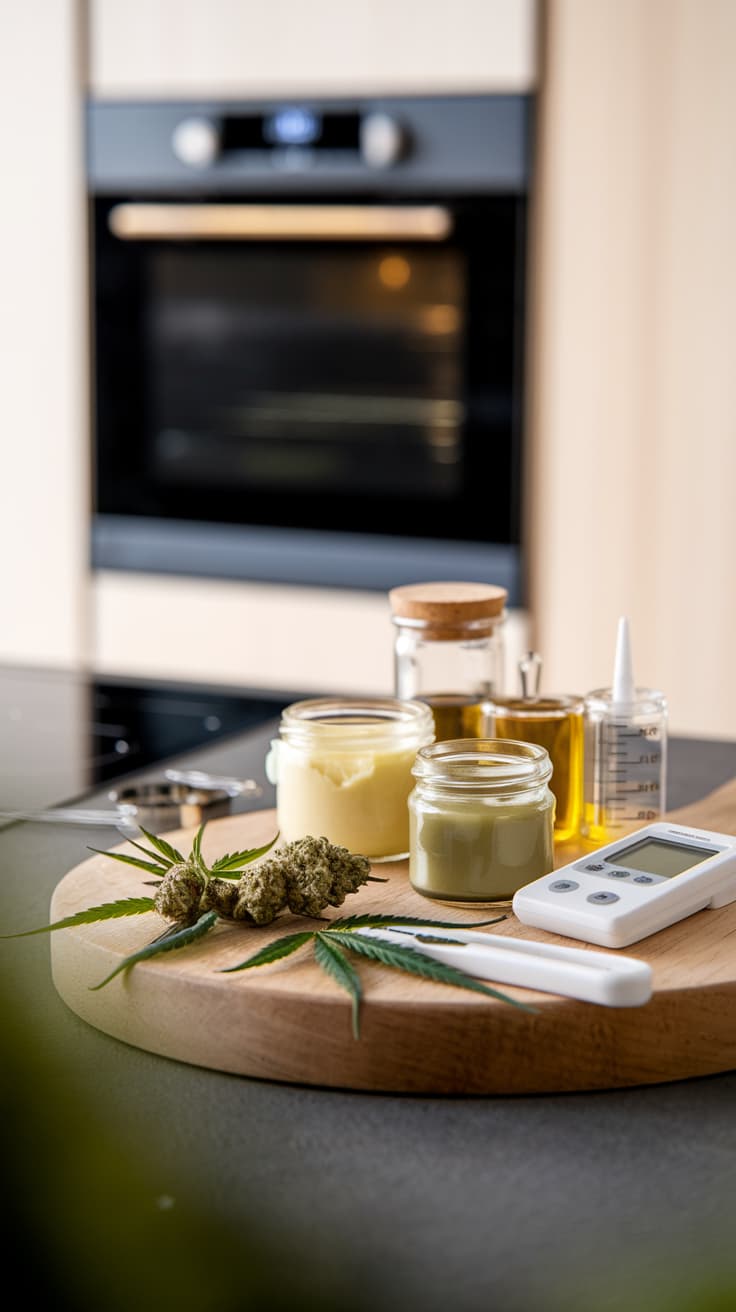
To really get how cannabis gets into food, we gotta look at the science behind it. Things like THC and CBD, which are what make cannabis do its thing, love to hang out with fats and oils.
Before you can use marijuana in food, you gotta ‘decarb’ it. This means heating it up to a certain temp to turn it into the stuff that actually works. By knowing this, you can use weed to make awesome food that’s both tasty and strong.
The Essentials Before Infusing
Picking the right cannabis is key for a good infusion. I like strains with lots of THC for strong edibles, but CBD weed can be awesome for medicine too. Flower is the usual choice, but trim can work too if you’re on a budget, just gotta be careful when you cook it.
No matter what, fresh, good weed is always the best!
Now, before infusing, decarboxylation is a must (and a non-negotiable step). This process activates the cannabinoids, transforming them into their usable form and unlocking their full potential. To learn more about the exact process and tools needed, check out my decarboxylation guide for beginners.
Quick tip: Decarbing your weed is key if you want to make some seriously good edibles. Don’t skip this step!
Popular Bases For Cannabis Infusion
The base you pick for your cannabis infusion really matters. It can mess with how strong it is, what it tastes like, and even how it feels in your mouth. Figuring out what each base does will help you find the best one for what you’re making!
These are the most popular bases for cannabis infusions:
Cannabis Butter (Cannabutter)
Cannabutter is like, the base for all things cannabis cooking, you know? It’s super handy, easy to whip up, and you can use it in tons of recipes. I’ve been using it for ages!
The trick with making cannabutter is getting the texture right. If it’s too soft, it’s a total mess. Too hard, and you’ll struggle to use it. I’ve found that finding the sweet spot is key.
Cannabis Oil
Cannabis oils are a popular choice. They taste clean, so they’re great on salads or veggies! I must say, I love using cannabis-infused olive oil to make simple dishes stand out.
When selecting an oil for infusion, consider the smoke point. High-heat cooking calls for oils with a higher smoke point, like avocado or coconut oil. For lower-temperature applications, olive oil or grapeseed oil are great options.
Tinctures (Alcohol-Based Infusions)
They’re like the sneaky ninjas of cannabis consumption: potent and easy to hide. Plus, they’re a breeze to dose, just a few drops in your drink or food, and you’re good to go.
Now, when it comes to making these you need to choose between the cold or warm method. The cold method is slow and gentle, while the warm way is more like… well, you get the idea.
I’m a fan of the warm way, but both get the job done!
Cannabis Honey
Infused honey is a delicious and versatile ingredient. It’s perfect for sweetening tea, drizzling over yogurt, or adding to baked goods. I’ve even used it to make a mean honey-garlic glaze for roasted vegetables.
When infusing honey, it’s important to use gentle heat to avoid damaging the delicate compounds. A double boiler is a great tool for this.
Other Creative Bases
Don’t be afraid to experiment with different infusion bases. I’ve had success with milk, cream, and even nut butter. These bases can be used to create unique and flavorful edibles.
You can use milk with cannabis in it to make lattes or hot chocolate. And you can put it in nut butter to make your toast or sandwiches taste better.
How to Infuse Edibles?
I’ve tried a bunch of ways, but baking in the oven is the simplest and it always works for folks starting out. Let me break it down for ya!
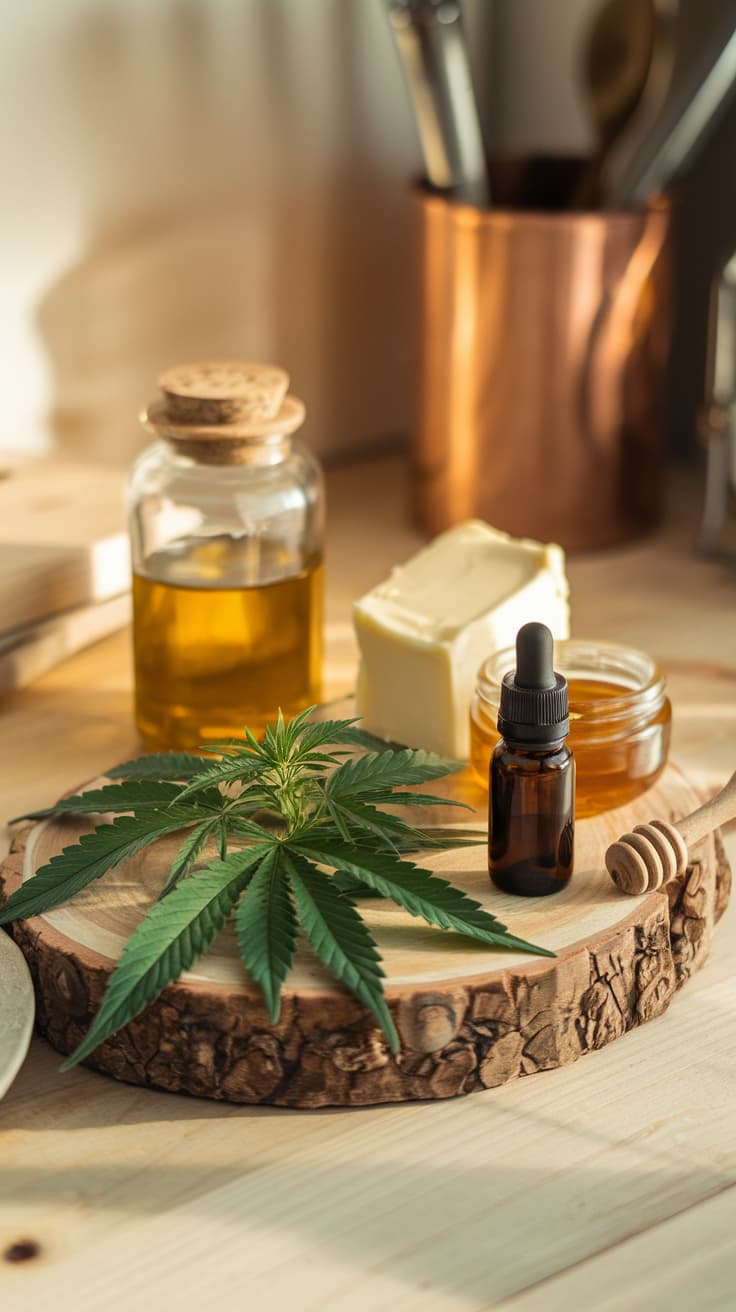
Tools:
- Your trusty oven.
- Your favorite base (oil or butter).
- About 10 grams of decarbed weed.
- Cheesecloth or a fine-mesh strainer.
- A mason jar.
Instructions:
1. Combine ingredients: In your oven-safe container, combine the decarboxylated cannabis with your chosen fat. Use a ratio of approximately 1 ounce of flower to 1 cup of fat.
2. Heat in the oven: Place the container in the preheated oven at a low temperature, around 170-200°F (75-95°C).
3. Simmer to Perfection: Let the mixture simmer in the oven for 2-4 hours, stirring occasionally.
4. Remove Plant Matter: Once the mixture has finished infusing, carefully remove it from the oven and let it cool slightly. Strain the mixture through a cheesecloth to remove any plant matter.
5. Lock it Up: Store your infused fat in an airtight container in the refrigerator.
Other Methods for Infusing Cannabis
There are several other methods to infuse your cannabis, each with its own pros and cons, kind of like choosing between broiling or braising your favorite protein. Let’s talk about the most common options to help you find your perfect infusion partner.
Stovetop:
This method is super beginner-friendly. You just need to gently simmer your decarboxylated herb and oil together on the stovetop for a few hours, but be sure to hang around for a bit to watch the heat so you don’t burn your oil!
Here’s a simplified breakdown:
- Add the decarbed cannabis and your chosen oil or butter to a pot
(use 1 ounce of cannabis per 1 cup of oil/butter). - Set your stovetop to low heat (160–200°F / 71–93°C)
- Simmer for 2-3 hours, stirring occasionally.
- Once done, strain the mixture through a fine mesh strainer to remove plant material.
- Transfer the infused oil or butter into a jar or container for storage.
| PROS | CONS |
|---|---|
| Complete control over the process. | The process takes several hours. |
| No specialized equipment needed. | Hot spots may lead to uneven infusions. |
Quick Tip: Simmering for too long can actually reduce the potency of your oil, so set a timer and avoid becoming overly chatty with your sous chef (even if it’s your pet goldfish).
Infusing With Crockpot or Slow Cooker:
This slow and steady approach practically guarantees an even infusion throughout the oil. You just need to toss in your decarbed weed and some oil, set it to low, and let it simmer for a few hours. Keep an eye on your oil, Crockpots can sometimes get a little carried away with the heat!
Here’s a quick step-by-step:
- Add decarbed cannabis and oil/butter to a slow cooker or double boiler
(with a 1:1 ratio of cannabis to fat by weight). - Set the temperature to low (160-200°F / 71-93°C).
- Let the mixture simmer for 4-8 hours, stirring occasionally.
- Once done, strain the infused oil or butter using cheesecloth.
No slow cooker at home? These are solid choices:
Best Offer
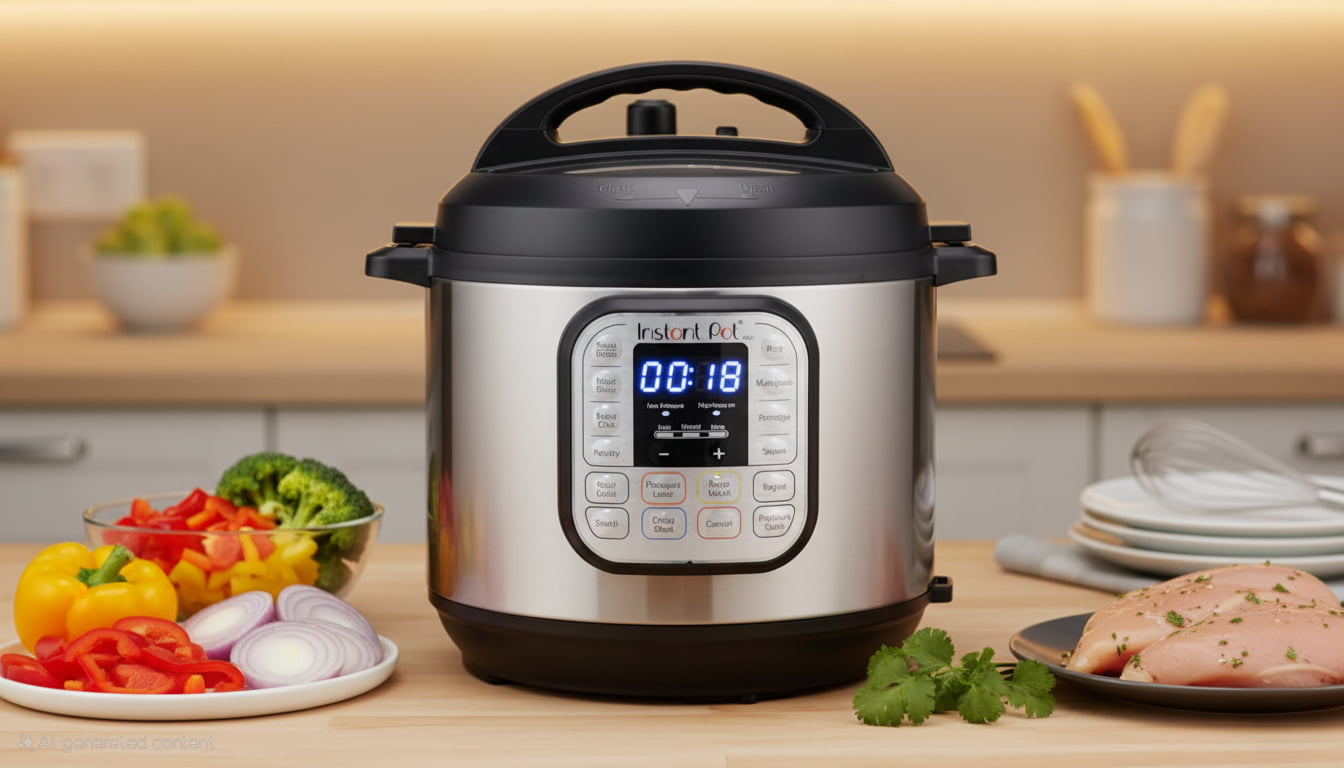
Instant Pot Duo
Best Seller
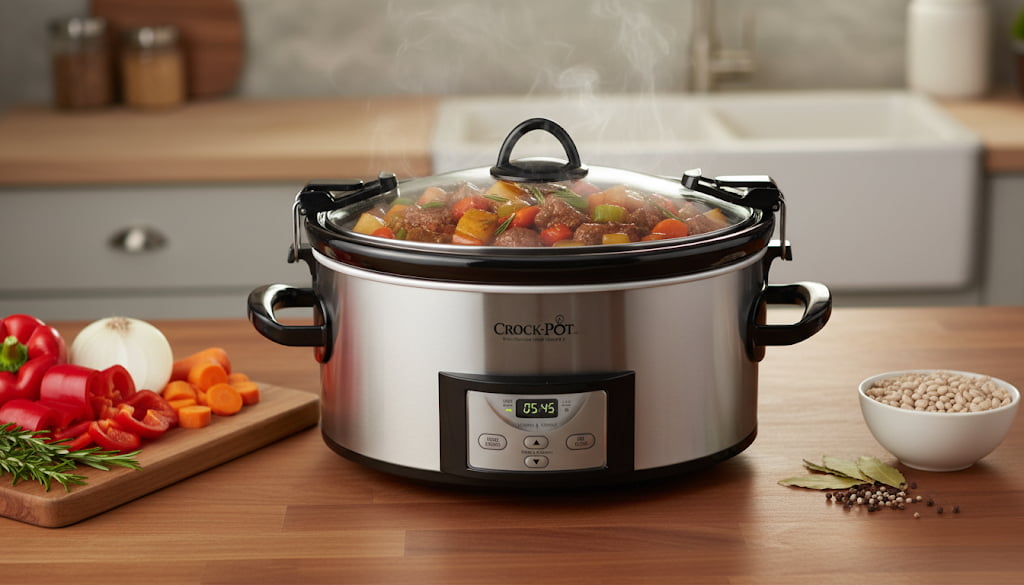
crock-pot quart cook & carry
Infusing With Sous Vide:
This is the most fancy way to infuse your carrier oil. Basically, you throw your decarbed goodies and some oil in a vacuum-sealed pouch, seal it tight, and then dunk it in a water bath that stays at exactly the right temperature.
This method gets you a super consistent and strong infusion. But you gotta get one of those fancy sous vide machines, which can be pricey. Might not be for everyone, but if you’re into trying new things in the kitchen, it’s totally worth it!
Here’s a simplified step-by-step:
- Place decarbed cannabis and oil or butter into a vacuum-sealable bag.
- Seal the bag and place it in a water bath set to a temperature of around 160–190°F (71–88°C).
- Heat for 2-8 hours, depending on the infusion strength desired.
- Once finished, remove the bag, strain the infusion, and discard the plant material.
Missing a sous vide? Grab one of these:
Best Seller
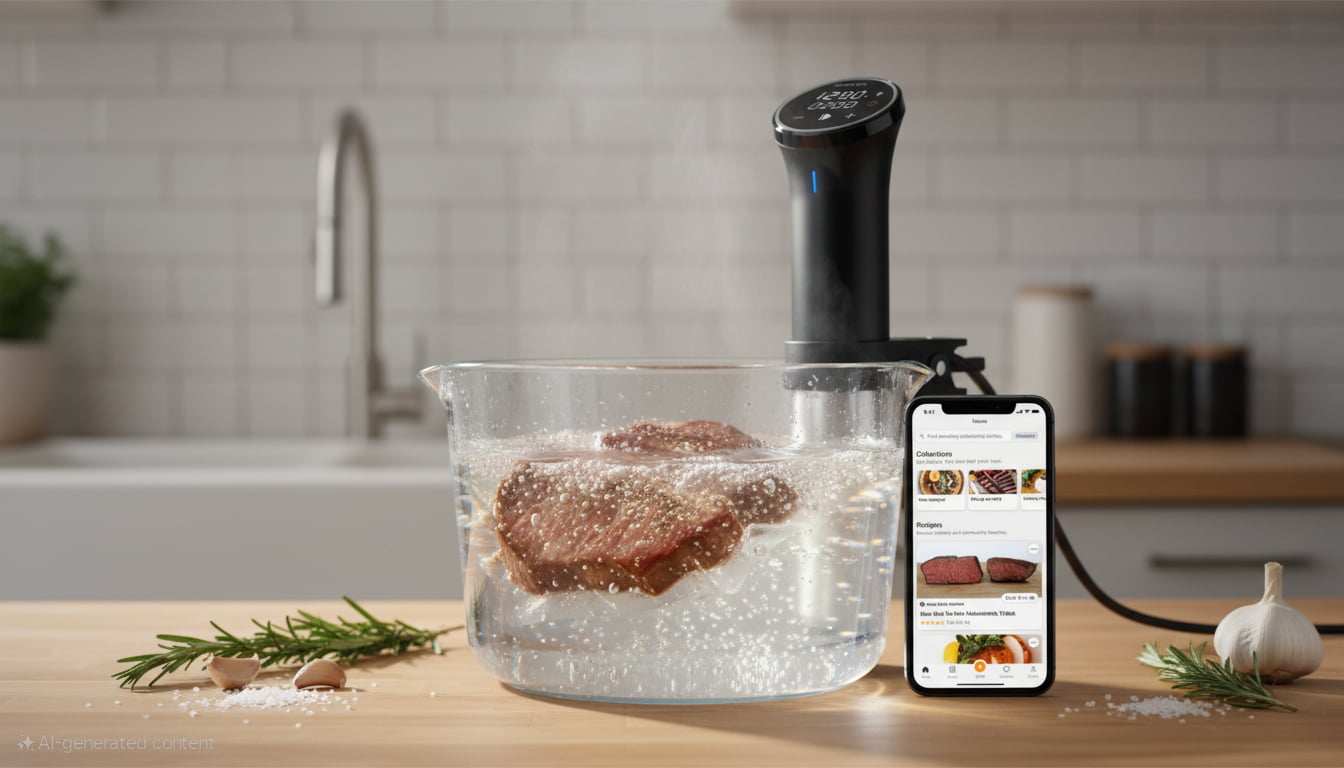
Anova Sous Vide 3.0
Best Offer
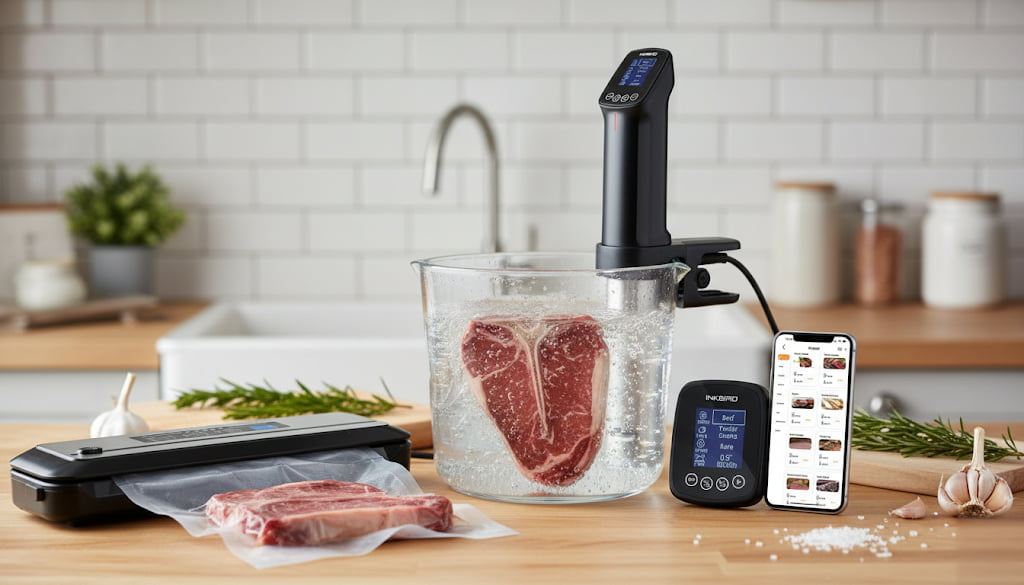
Inkbird WIFI Sous Vide
Infusing With Specialized Devices:
There are a bunch of neat tools out there to make things easier, like the Ardent FX or the Levo II. These countertop machines are super user-friendly, with built-in settings, and basically do all the work for you. But listen, these gadgets can get a little spendy, and might not exactly fit everyone’s wallet.
Here’s a simplified step-by-step using a Levo II:
- Place decarbed cannabis in the infusion chamber of the Levo II.
- Add your chosen oil or butter into the machine’s base.
- Set the desired infusion time (usually between 2-8 hours).
- Set the desired temperature (typically 160-200°F / 71-93°C).
- Once done, the oil or butter is automatically filtered and ready for use.
Don’t have a one? Here are a couple I recommend:
Best Offer
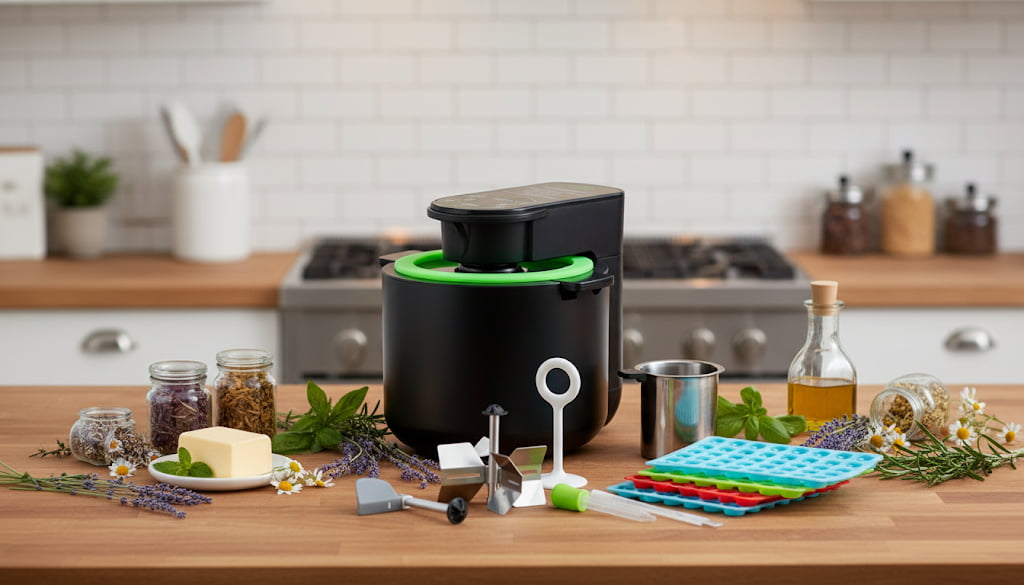
Herbnifique
Best Seller
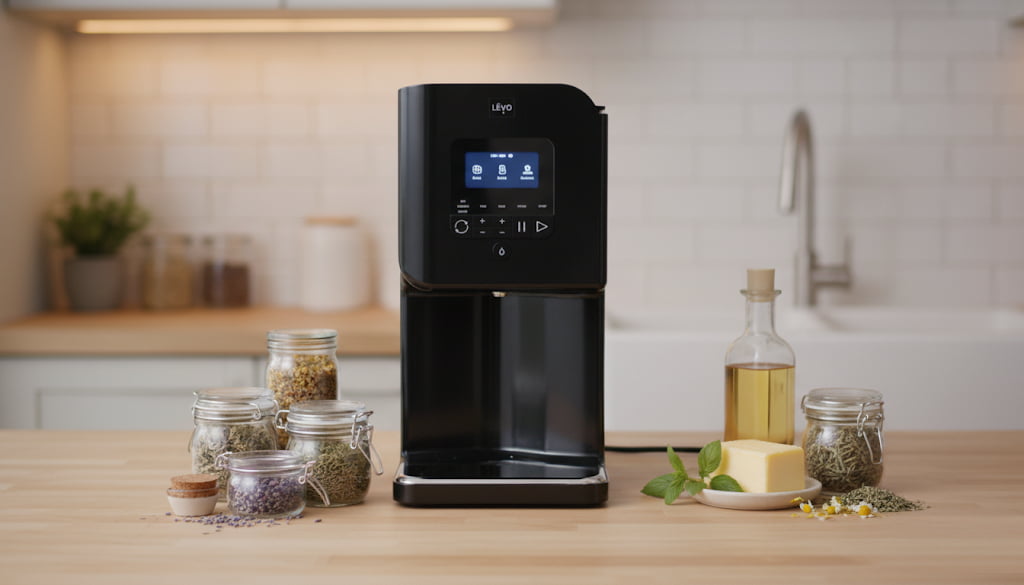
LEVO II+
Ultimately, the best infusion method depends on your priorities. Want speed? Go stovetop. Craving convenience? The crockpot is your friend. In the mood for ultimate control? Double boiler or Sous vide it is!
Dosing and Potency
When it comes to cannabis, potency isn’t just about strength; it’s about finding the right balance of cannabinoids to suit your needs. Please, keep in mind that the ratio of THC to CBD in your cannabis can significantly impact the effects you experience!
If you’re new to this, I’d say start with strains that have more CBD. These usually give you a more chill and focused feeling, which is great for daytime or if you’re kinda sensitive to THC. Once you get used to it, you can try strains with more THC to see how they feel.
Calculating Potency
Figuring out the potency of your cannabis infusion might sound like rocket science, but it’s actually quite simple. The key is to know the THC percentage of your cannabis and the weight of your infusion.
Here’s a basic formula:
THC per serving
=
(THC percentage of cannabis X Weight of cannabis)
Number of servings
Maybe an example will clear the air for everyone so, let’s say that you start with 10 grams of flower that’s 20% THC and infuse it into 100 grams of butter, the potency of the butter would be:
(0.20gr THC X 10gr of cannabis flower)
100gr of butter
=
0.02 mg of THC
(per serving)
This means that every gram of butter contains 20 milligrams of THC.
Don’t worry, you don’t have to be a math whiz. I have an online dosage calculator that can do the heavy lifting for you. Just plug in the numbers, and voila! You’ll have all the math done.
Storage and Shelf Life
Proper storage is crucial for preserving the potency and flavor of your cannabis infusions. As a general rule, store your infusions in airtight containers, in a cool, dark place to prevent oxidation and degradation of the cannabinoids.
For more in-depth information on how to properly store your edibles and extend the shelf life of your cannabis infusions, check out my edible storage guide.
Common Mistakes and How to Avoid Them
Cooking with cannabis can be incredibly rewarding, but it’s also easy to stumble into a few common pitfalls (especially if you’re new to the process). Here, I’ve outlined the most frequent mistakes I see in cannabis cooking and, of course, how to avoid them!
Miscalculating Dosages
Using too much or too little cannabis can lead to overpowering or ineffective results. This often happens due to misunderstanding THC/CBD percentages or skipping the math entirely. (Use my Dosage Calculator to ensure precision).
💡 Pro Tip: Always measure your cannabis accurately and calculate potency after decarboxylation.
Skipping Decarboxylation
Forgetting to decarboxylate your cannabis before infusion leaves cannabinoids inactive. Many assume that cooking temperatures will handle this step, but that’s not true. Use my Decarb Guide to learn the science of activation.
Not Straining Properly
Leaving plant material in your final product can lead to an unpleasant texture. This happens when using the wrong tools or rushing through the straining process. Use a fine-mesh strainer, cheesecloth, or nut milk bag for clean results. Strain slowly and avoid squeezing the plant matter to keep the infusion smooth.
Overheating the Infusion
This usually happens when rushing or not monitoring heat closely. Stick to a gentle heat (below 245°F/118°C) and use a double boiler or slow cooker for consistent, low heat.
Ignoring the Flavor Profile
Ending up with food that tastes too much like cannabis can ruin the experience. This usually happens when you use a lot of infused oil or don’t mix the flavors right. Try pairing weed with strong, earthy, or sweet tastes like chocolate, coffee, or spices. Blend infused and non-infused fats to control potency and taste.
Infusion Recipes to Get Started
When I first started cooking with marijuana, I kept it simple. Brownies were my jam, ya know? But if you’re looking for something a bit different, here’s a few easy recipes you might like:
Advanced Recipe Ideas
Once you’ve mastered the basics, you can start experimenting with more complex recipes. Why you don’t try any of these ones:
Common Questions
Why does my infusion taste grassy?
Usually, that happens when you overheat it while you’re getting it ready to use, or if you don’t strain it good enough.
Are there any specific benefits to using one fat over another?
Well, each fat brings its own taste, but the main thing is to get those good bits out of the weed. Coconut oil is a top pick ’cause it’s packed with fat and can handle the heat.
How do I know when the infusion is complete?
The easiest way to tell if your infusion is ready is to try a tiny bit. Eat or drink a little of what you’ve infused and see how it feels.
Making edibles is like a fun cooking adventure. You can try lots of different kinds of weed, mix it into all sorts of foods, and get creative with how you do it. Just don’t burn the brownies, alright?
By following best practices, understanding dosing, and a couple more things, you can create delicious and potent edibles that are safe and enjoyable.
Happy infusing!

